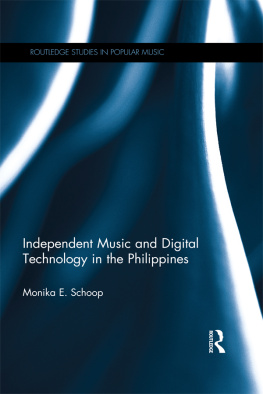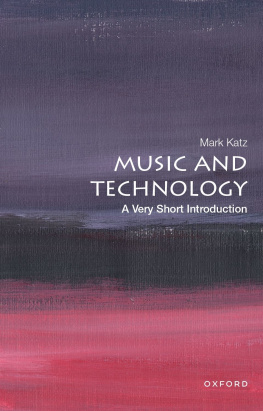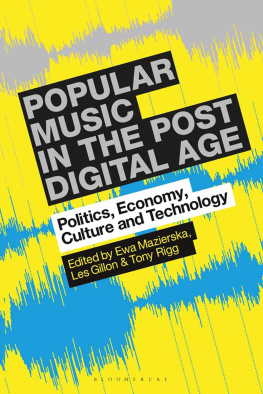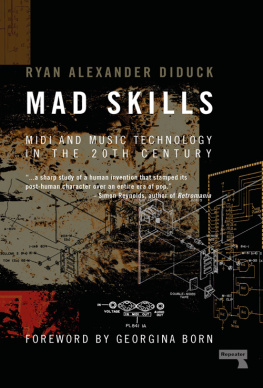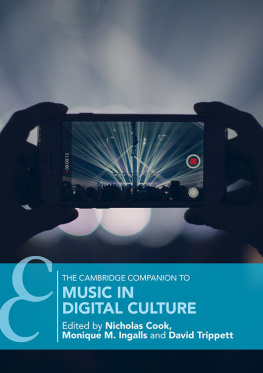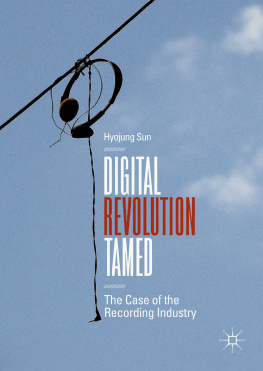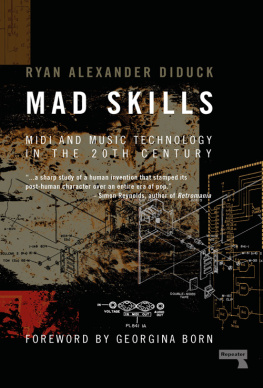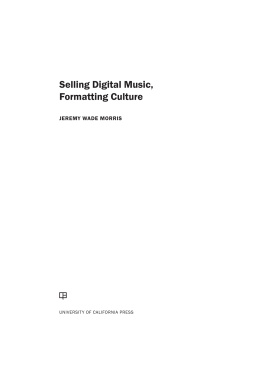First published 2017
by Routledge
2 Park Square, Milton Park, Abingdon, Oxon OX14 4RN
and by Routledge
711 Third Avenue, New York, NY 10017
Routledge is an imprint of the Taylor & Francis Group, an informa business
2017 Monika E. Schoop
The right of Monika E. Schoop to be identified as author of this work has been asserted by her in accordance with sections 77 and 78 of the Copyright, Designs and Patents Act 1988.
All rights reserved. No part of this book may be reprinted or reproduced or utilised in any form or by any electronic, mechanical, or other means, now known or hereafter invented, including photocopying and recording, or in any information storage or retrieval system, without permission in writing from the publishers.
Trademark notice: Product or corporate names may be trademarks or registered trademarks, and are used only for identification and explanation without intent to infringe.
British Library Cataloguing-in-Publication Data
A catalogue record for this book is available from the British Library
Library of Congress Cataloging-in-Publication Data
Names: Schoop, Monika E.
Title: Independent music and digital technology in the Philippines / Monika
E. Schoop.
Description: Abingdon, Oxon ; New York, NY : Routledge, 2017. |
Series: Routledge studies in popular music series | Includes bibliographical
references and index.
Identifiers: LCCN 2016046630| ISBN 9781138223745 (hardback) | ISBN
9781315403267 (ebook)
Subjects: LCSH: Sound recording industry--Philippines. | Popular music-
Production and direction--Philippines.
Classification: LCC ML3790 .S295 2017 | DDC 781.6309599/09051--dc23
LC record available at https://lccn.loc.gov/2016046630
ISBN: 978-1-138-22374-5 (hbk)
ISBN: 978-1-315-40326-7 (ebk)
Typeset in Times New Roman
by HWA Text and Data Management, London

Arrivals
April 3, 2012 . Black spots are dancing up and down in front of my eyes. It has been almost 30 hours since I left my apartment in Cologne, Germany, equipped only with my laptop and a single suitcase hopefully including everything that will get me through the next two months. I am tired and sweating. After retrieving my belongings at the baggage reclaim and passing through immigration, I stop at an ATM in order to withdraw 5,000 PHP, 900 of which I immediately invest in a SIM card of a local telecommunications company that offers prepaid Internet plans. I shove the card into my phone and step out of the airport into Manilas hot and humid air. An overseas Filipino worker that I met on the plane a young woman approximately my age, who teaches at a school in Qatar and is returning to Manila to visit her family had promised to show me how to get to my destination, Quezon City. She points towards a line of cabs. After negotiating with the driver and agreeing on a price, we head down Epifanio de los Santos Avenue, commonly known as EDSA, towards Quezon City and the University of the Philippines, Diliman. I always thought I was used to traffic. I spent a large part of my life in one of Germanys most densely populated areas and temporarily worked in Los Angeles but nothing compares to rush hour in Metro Manila. The cities are choked with traffic. I realize that I have hardly eaten since I left for the Philippines. As part of an endless stream of cars, we pass through the cities of Pasay, Makati and Mandaluyong. After what felt to be two hours, we finally arrive in Quezon City. I have developed a habit of studying maps of the places I travel to and have not failed to do so this time. The Quezon Memorial Circle is easy to recognize. The three concrete pylons of the memorial, which houses the remains of Manuel Quezon, the first president of the Philippines after the countrys independence, can be seen from afar and it is hard to deny that the roundabouts 16 lanes also add to the landmarks uniqueness. We are finally close to the UP campus. Our cab drives past a number of jeepneys heading down Commonwealth Avenue. Adapted from the jeeps left in the Philippines by the US military after World War II, these colourful vehicles have become an icon of Filipino culture and a popular mode of public transport. The ones driving past the Elliptical Road are crammed with people, some even clinging to the outside of the vehicles. None of them looks suitable for the transportation of human beings according to European road safety standards. Little did I know at this point that I was soon to become one of the passengers. Disregarding the directions, the cab driver misses University Avenue and the main entrance, forcing us to pass through a squatter area before we finally enter the campus through one of the eastern gates. By now, the sun has set and I would lie if I said that driving though the slums had not at least slightly scared me. I am relieved to see that Balay Kalinaw, my home for the next months, is a solid building made of bricks and mortar. I wave goodbye to my companion, who continues her journey to her mothers house, and lift my suitcase out of the boot. I like adventures and I am starting to feel that this might be a good one.
My arrival in Metro Manila, the National Capital Region of the Philippines, could easily qualify as my arrival in the field but this is only a part of the story. My first arrival is in fact much harder to pinpoint, not only in terms of time but also in terms of geography. I can probably go as far as to trace it back to the 1980s and my fascination for my fathers reel-to-reel tape recorder, my first computer in the early 1990s, or my first encounter with the Internet in high school back in 1997. I am probably too old to be considered a digital native but I have been online for more than half of my life. Music has also been an indispensable part of my life ever since I can remember. I spent hours and hours of my late teens and early twenties searching the Internet for new music. I was still using a dial-up connection back then and it literally took ages for songs to download. I have not given up on this habit and still spend nights in front of my computer surfing the Internet, but a lot has changed since I first encountered the net and its plain HTML websites. From my perspective, things have become a lot more convenient. The Internet gained widespread popularity and broadband suddenly was affordable for a student like me. DSL broadband and wireless LAN became the default in many countries, including Germany. An abundance of music was suddenly accessible. In 2007, I received my MA in ethnomusicology and delved deeper into various kinds of music. I also developed an interest for the changing structures of the music industries. I met musicians and founders of online labels, dealt with copyright criticism and alternative licensing models, attended conferences and read piles of scholarly articles and countless books from Andrew Keens The Cult of the Amateur to Chris Andersons The Long Tail . Most of the publications focused on the Internets impact on the culture industries and the benefits of new business models for artists and businesses. Hardly ever was there a musicological, let alone ethnomusicological piece. But not only did the research appear to be one-sided; there was also something that struck me about the music itself. Most of the music I found online was released by European or North American labels and was written and performed by European or North American artists. One does not have to be an ethnomusicologist to notice the seeming dominance of certain geographical areas commonly referred to as the West. Suddenly, my nightly perusals had a new mission. I sat down in front of my laptop and started searching the web for labels and artists based outside of Europe and North America that promote and distribute their music online. Once I consciously started looking for them, they popped up almost everywhere: in South Africa, China, Indonesia and Argentina. Online labels especially seemed to be up-and-coming in South East Asia. It was in early 2011 when I first encountered what came to be my field. I cannot pinpoint the date, but it must have been right after their launch when I came across the website of the newly founded Philippine label Number Line Records. I added their sampler to my iTunes and it just spread from there on. I discovered more and more artists from the Philippines, downloaded their music, liked them on Facebook, started email conversations and without actually noticing, my research on independent music and technology in the Philippines had begun. Prior to setting foot on Philippine soil, I had already arrived at (at least parts of) my field.

